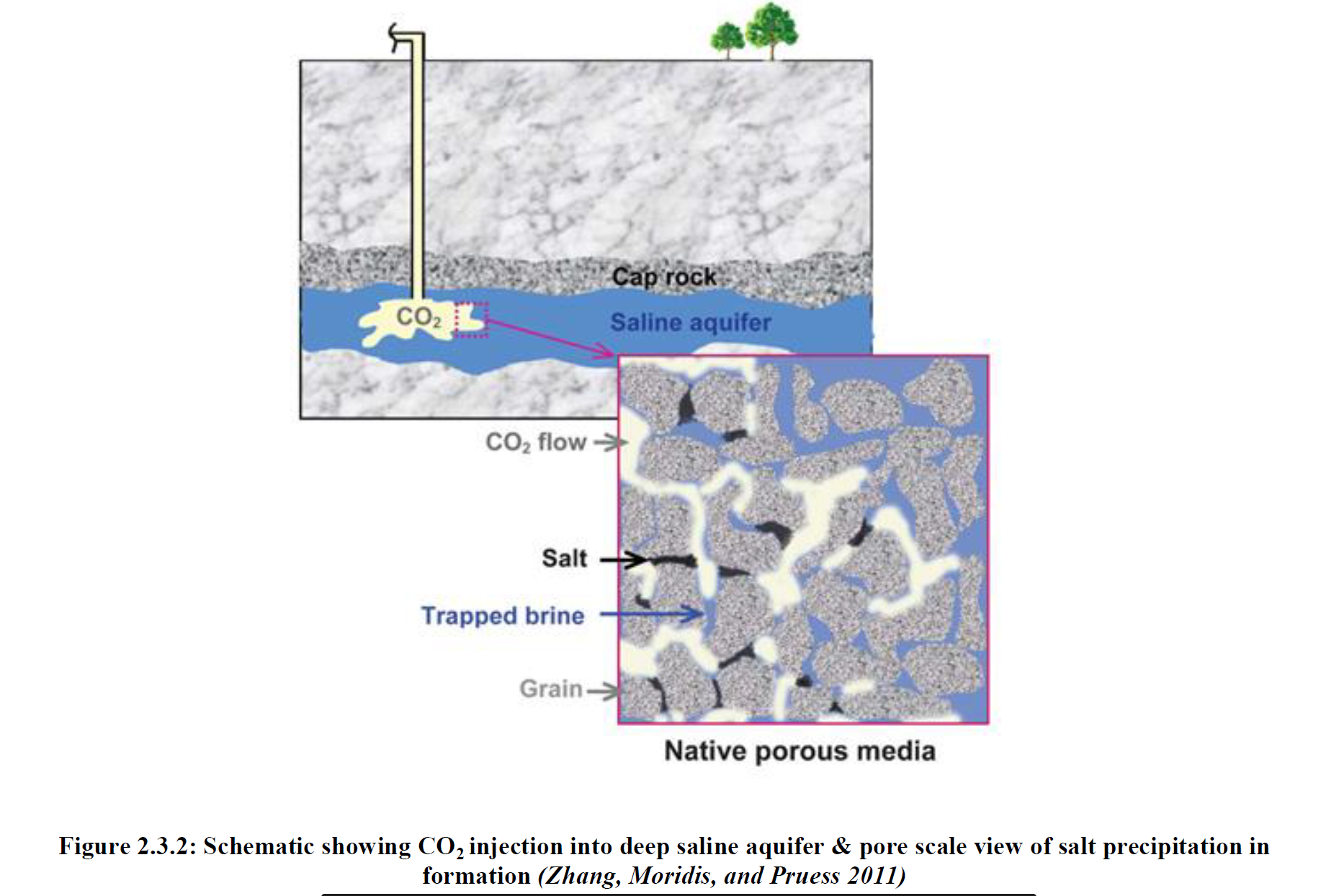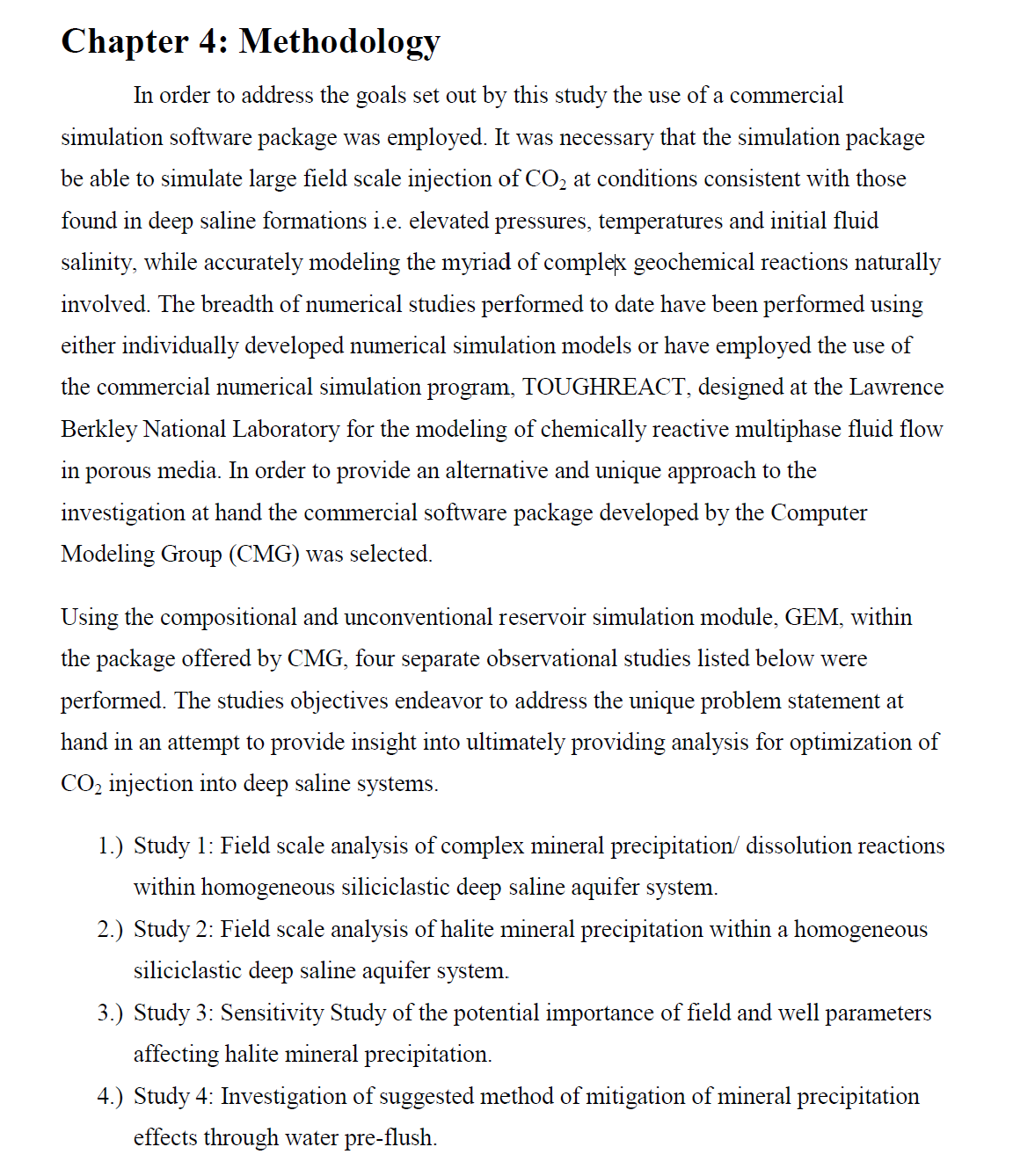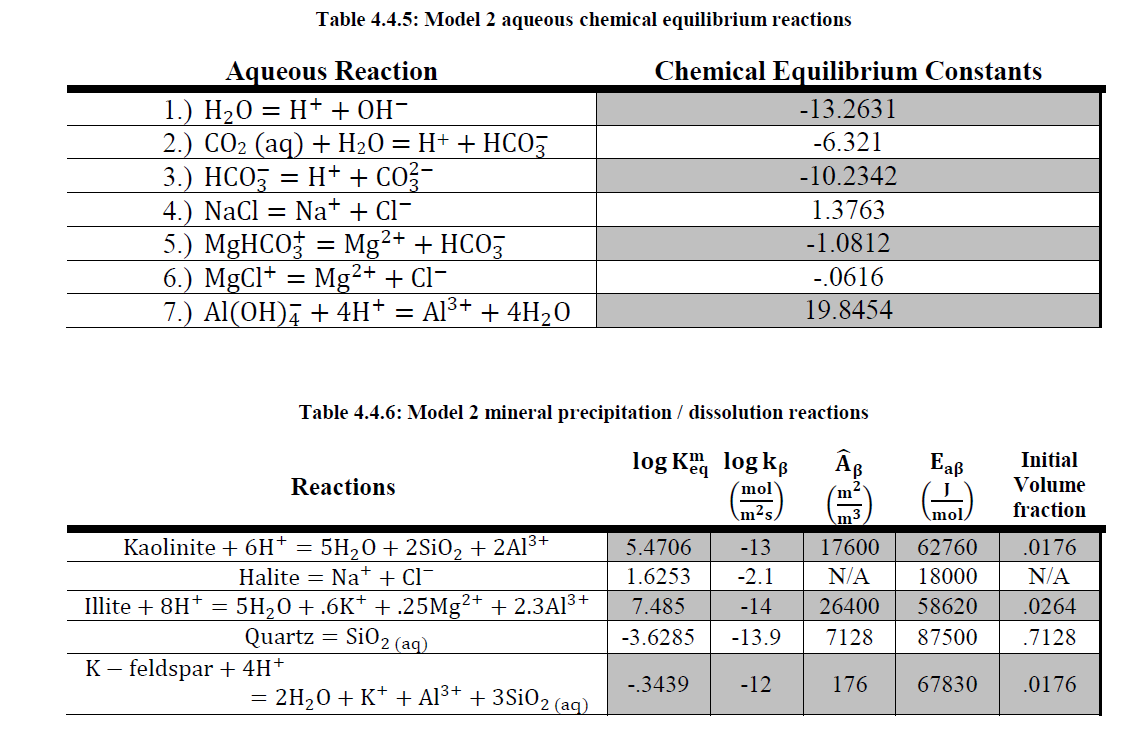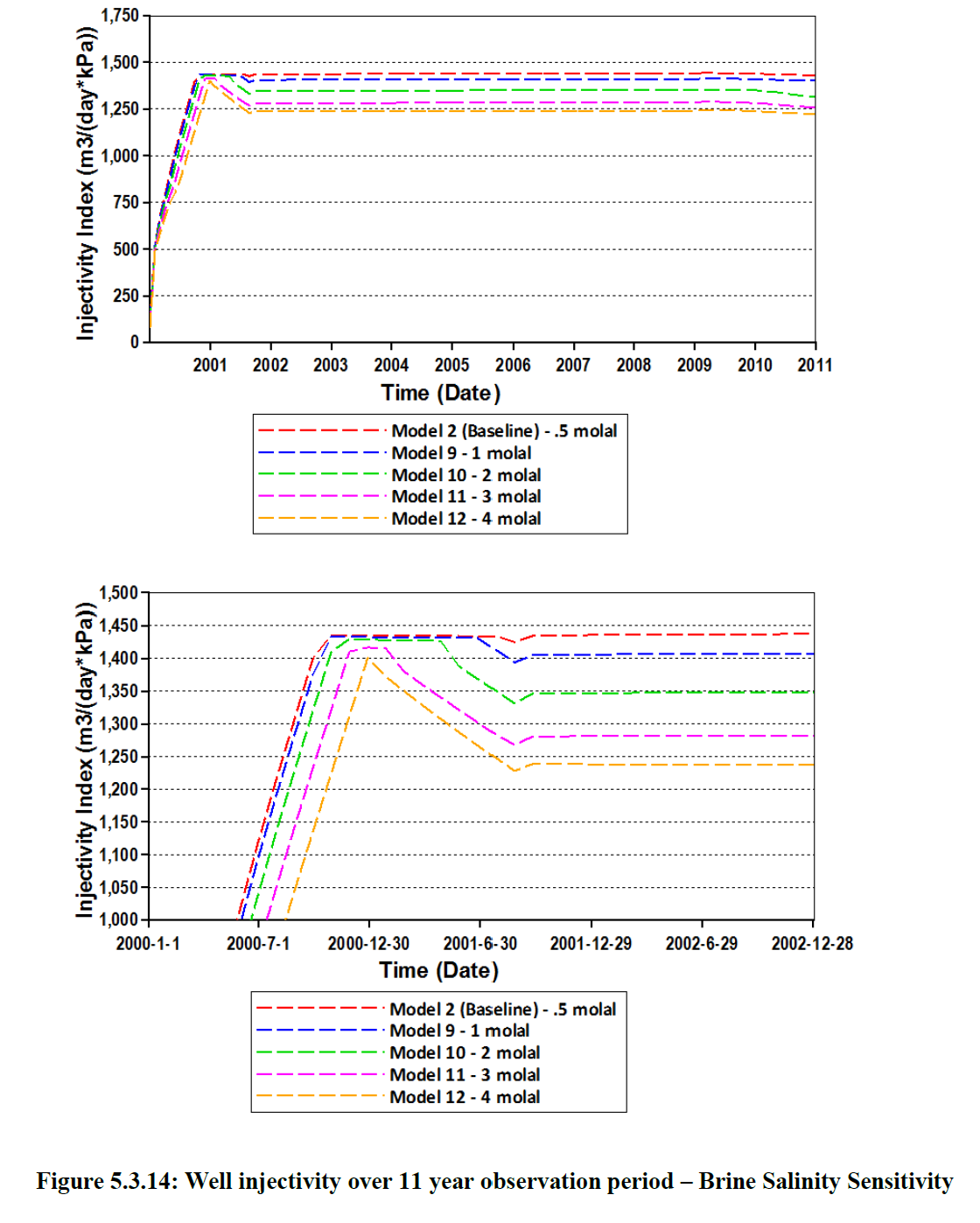近年来,公众对全球气候变化以及温室气体排放,特别是二氧化碳排放造成的持久影响的兴趣一直在稳步增长。在试图减少二氧化碳排放和减轻相关负面影响的过程中,二氧化碳捕获和储存,也称为二氧化碳封存,已经成为一种可以长期有效减少二氧化碳排放的方法。在捕获的二氧化碳的潜在地质储存场所中,深层含水层是最具吸引力的储存选择。
不幸的是,在这些含水层中发现的条件下,人们对二氧化碳、宿主地层和原位盐水之间发生的复杂过程知之甚少。一旦注入CO2,响应于形成的酸性环境而发生的矿物溶解和沉淀反应具有改变地层性质的潜力。此外,由于盐水相蒸发到连续流动的干燥CO2相中而导致的卤化物沉淀是一种已经在实验规模上广泛观察到的现象,并且已经观察到对样品的孔隙率和渗透率产生负面影响。
然而,这些地球化学矿物反应在矿场规模上对地层性质和井吸水能力的影响在工业界存在争议,因此进行了矿场规模的模拟研究,以评估和量化其潜在意义。商业组分模拟软件GEM用于开发多个模型,以模拟向硅质碎屑深层含水层地层中长期注入CO2。观察了注入CO2后主矿物溶解和沉淀以及岩盐矿物沉淀的规模和程度,并评估了对井注入能力的影响。进行了敏感性研究,以评估CO2注入速率、地层温度和地层盐度对岩盐沉淀的潜在影响及其负面影响。此外,还研究了通过淡水预冲洗缓解岩盐沉淀负面影响的潜力。注入CO2后,观察到溶解是主要的矿物反应,但有限的溶解规模对井注入能力的影响最小。岩盐沉淀的范围仅限于近井区域,对井吸水性的影响有限。地层盐度似乎是影响岩盐沉淀的最重要特性,在较高盐度下对地层孔隙度和渗透率有显著影响。然而,在CO2注入开始之前的3个月淡水注入期可以有效地抵消这些影响。
MODELING THE EFFECTS OF SALT PRECIPITATION & KINETIC MINERAL REACTION ON WELL INJECTIVITY DUE TO CARBON DIOXIDE INJECTION IN DEEP SALINE AQUIFERS
ABSTRACT
Within recent years public interest has steadily been growing over global climate change and the lasting effects caused by greenhouse gas emissions, carbon dioxide in particular. In attempting to reduce CO2 emissions and mitigate the associated negative effects, carbon dioxide capture and storage, also known as carbon dioxide sequestration, has emerged as a method by which CO2 emissions may effectively be reduced long term. Of the potential geologic storage sites for captured CO2, deep saline aquifers present the most attractive storage option.
Unfortunately, little is known about the complex processes which take place between CO2, the host formation, and in situ brine at the conditions found within these aquifers. Mineral dissolution and precipitation reactions which take place in response to the acidic environment formed once CO2 is injected have the potential to alter formation properties. In addition, Halite precipitation due to vaporization of the brine phase into the continuous flowing dry CO2 phase is a phenomenon which has been observed extensively on the experimental scale and has been observed to negatively impact sample porosity and permeability.
The impacts of these geochemical mineral reactions on formation properties and well injectivity on the field scale is however debated within industry and thus a field scale simulation study was performed in order to evaluate and quantify the potential significance. The commercial compositional reservoir simulation package GEM was used to develop multiple models in order to simulate prolonged CO2 injection into a siliciclastic deep saline aquifer formation. The scale and extent of host mineral dissolution and precipitation as well as halite mineral precipitation following CO2 injection were observed, and the impacts to well injectivity assessed. A sensitivity study was performed in order to assess the potential impacts of CO2 injection rate, formation temperature, and formation salinity on halite precipitation and its negative effects. In addition the potential for mitigation of the negative effects of halite precipitation through means of a fresh water pre flush was studied. iv Following CO2 injection, dissolution was observed to be the predominant mineral reaction however the limited scale of dissolution resulted in minimal impact on well injectivity. The extent of halite precipitation was limited to the near well region with limited impacts on well injectivity. Formation salinity appears to be the most significant property in impacting halite precipitation with noticeable impacts to formation porosity and permeability at higher salinities. These effects can however be effectively negated with a 3 month fresh water injection period prior to the onset of CO2 injection.





